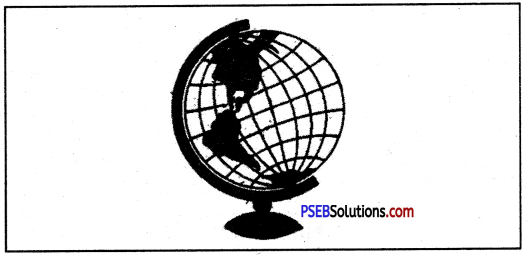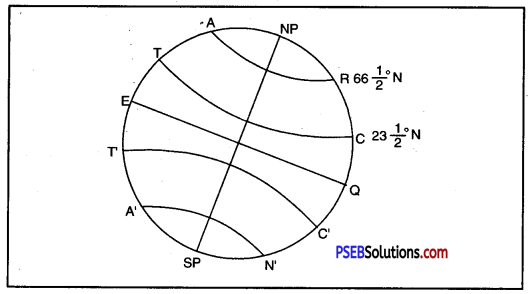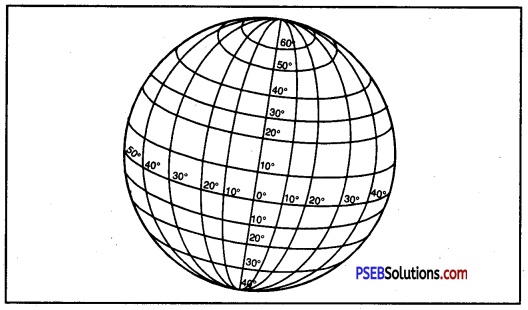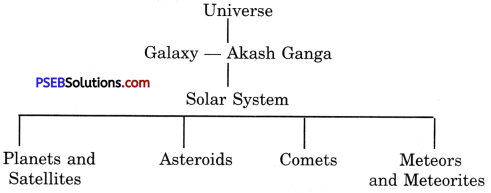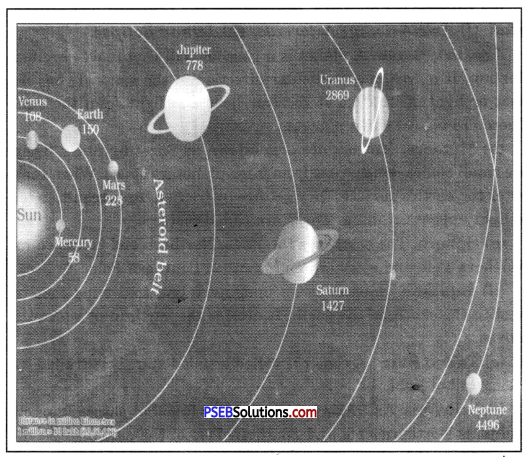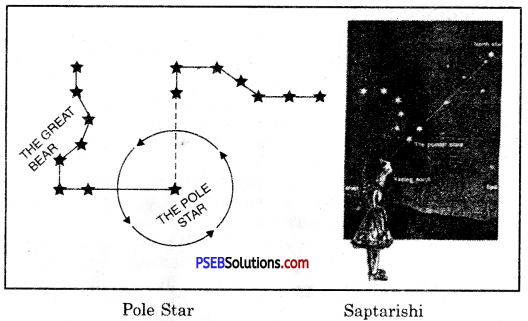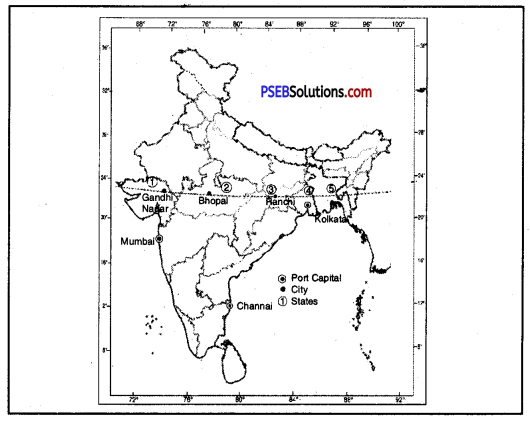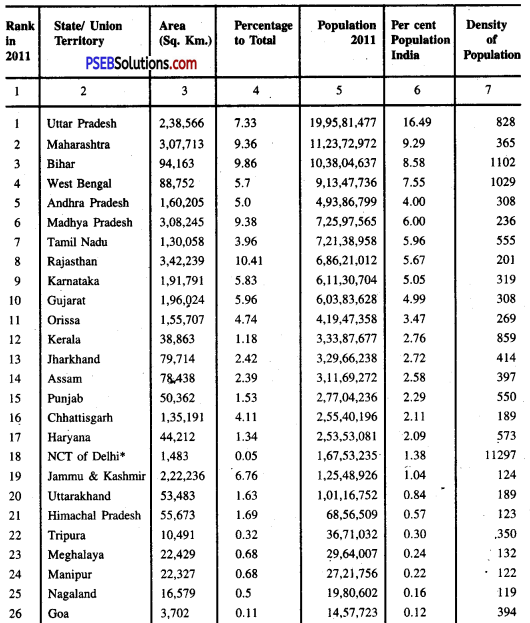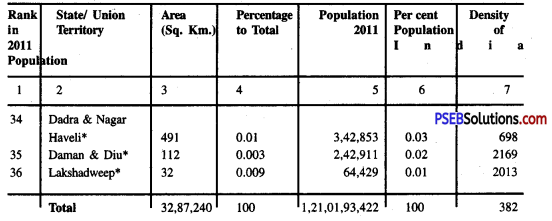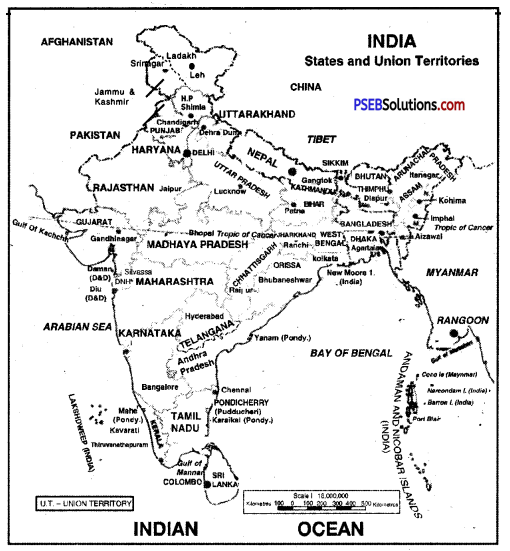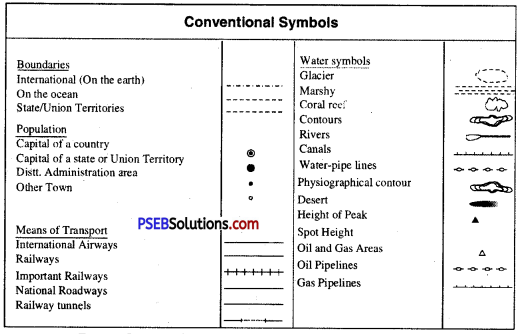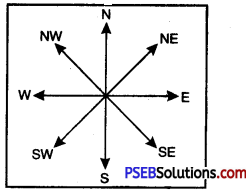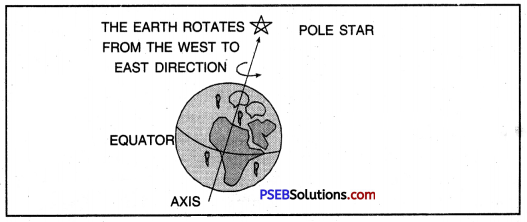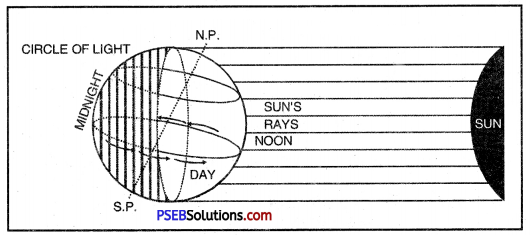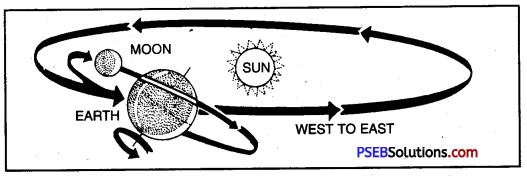Punjab State Board PSEB 6th Class Social Science Book Solutions History Chapter 17 The Chalukyas and the Pallavas Textbook Exercise Questions and Answers.
PSEB Solutions for Class 6 Social Science History Chapter 17 The Chalukyas and the Pallavas
SST Guide for Class 6 PSEB The Chalukyas and the Pallavas Textbook Questions and Answers
I. Answer the following questions :
Question 1.
What do you know about the Chalukyas of South India?
Answer:
The Chalukyas established their rule in South India in the early 6th century A.D. Pulakeshin-I and his son Kirtivarman were early notable kings of this dynasty. Vatapi (modern Badami) in District Bijapur of Karnataka was their capital city. The most famous and strong king’of this dynasty was Pulakeshin-II. He wanted to establish his rule over the whole of the Deccan. He achieved some success in the beginning. He conquered several areas in South India and defeated the Pallavas of Tamil Nadu. He defeated great king Harshavardhana near the river Narmada. But he was defeated by the Pallava king Narasimhavarman-I. This was a big defeat for the Chalukyas. Pulakeshin-II died in 642 A.D. His successors were inefficient and they failed to control the empire. In the middle of the eighth century, the Rashtrakutas defeated them, and ended their rule.
Question 2.
Write a note about the temples of the Chalukyas.
Answer:
The Chalukyas were great lovers of art. They constructed several famous temples at.Aihole, Vatapi and Pattadkal. The Virupaksha and the Pampanatha temples were the most famous. These temples were dedicated to Brahma, Vishnu and Shiva. They had beautiful panels of scenes from the Ramayana. The Chalukyas also got beautiful cave temples built at Vatapi (Badami). These temples are known for their artistic carvings. Most of the sculptures found at Ellora were due to the patronage of the Chalukyas.
![]()
Question 3.
What do you know about the Pallavas?
Answer:
The Pallavas were officers of the Satavahanas. When the Satavahana kings became weak, they strengthened their position and captured power. They gradually expanded their state towards the region of Kanchipuram near Chennai in Tamil Nadu. They had to fight many wars against the Pandyas and the Chalukyas. They conquered regions south of Kanchipuram, Tanjore and Puddukottai.
Mahendravarman-I was a famous king of the Pallava dynasty. He was involved in a long struggle with the Chalukya ruler Pulakeshin-II. He was not just a warrior but also a poet and a musician. His son Narasimhavarman-I was also a great warrior. He defeated the Chalukyas and thus avenged the defeat of his father. He also sent two expeditions against Sri Lanka and came out victorious.
The Pallavas were locked in a long struggle with the Cholas. Ultimately, they were defeated and ousted in the 9th century A.D.
Question 4.
Write about the art and architecture of the Pallavas.
Answer:
The Pallavas were great patrons of art and architecture. They were deeply interested in temple building. They got several temples constructed. Some of them were cut out of large rocks such as the Ratha Temples at Mahabalipuram. The Ratha Temples are named after the’ Pandavas of the Mahabharata. Another Pallava temple at Mahabalipuram is known as the Shore Temple. At their capital city Kanchipuram the Pallavas constructed the famous Kailashanath Temple. Besides the sculptures of gods and goddesses, statues of the Pallava kings and queens were»also built in these temples.
The Pallavas also patronised music, dance and painting.
II. Fill in the blanks :
Question 1.
_______ and _______ were the famous kings of the Chalukyas.
Answer:
Pulakeshin I
Question 2.
Chalukya rulers were the famous patrons of _______
Answer:
Kirtivarman art
Question 3.
_______ founded the Pallava dynasty.
Answer:
Simhavishnu
![]()
Question 4.
Pallavas had their capital at _______ near Chennai in Tamil
Answer:
Kanchi,
Question 5.
Pallavas were great patrons and lovers of _______ and _______
Answer:
art, architecture
Question 6.
Pallava rulers were mainly followers of _______ and _______
Answer:
Jainism, Saivism.
III. Match the columns :
Question 1.
| A | B |
| (1) Persian ambassador | (a) Chalukya temple |
| (2) Virupaksha | (b) Pulakeshin II |
| (3) Mahabalipuram | (c) Pallava king |
| (4) Mahendravarman | (d) The Ratha temple. |
Answer:
Correct columns :
| A | B |
| (1) Persian ambassador | (b) Pulakeshin II |
| (2) Virupaksha | (a) Chalukya temple |
| (3) Mahabalipuram | (d) The Ratha temple. |
| (4) Mahendravarman | (c) Pallava king |
IV. Write ‘true’ or ‘false’ in the brackets given after each statement :
Question 1.
Pulakeshin-II fought with Harshavardhana.
Answer:
True
![]()
Question 2.
Aihole and Pattadkal are known for the seashore.
Answer:
False
Question 3.
Kanchipuram was the capital of the Chalukyas.
Answer:
False
Question 4.
Kailashanath temple was built by the Pallavas.
Answer:
True.
V. Activity (Something To Do) :
Question 1.
Collect pictures of the famous rock-cut temples of South India.
Answer:
Do it yourself.
PSEB 6th Class Social Science Guide The Chalukyas and the Pallavas Important Questions and Answers
Multiple Choice Questions
Question 1.
Which was the capital Chalukyas?
(A) Madwari
(B) Varanasi
(C) Aithole
(D) Kanaj.
Answer:
(C) Aithole.
Question 2.
Who was the best chalukya ruler?
(A) Vijayaraja I
(B) Vijayraja II
(C) Samudragupta
(D) Pulakeshin II.
Answer:
(D) Pulakeshin II.
![]()
Question 3.
_______ was the court poet of Pulakeshin II?
(A) Ravikirti
(B) Xuan Zang
(C) Banabhatta
(D) Harishana.
Answer:
(A) Ravikirti.
Question 4.
After the decline of kingdom, the Chalukyas and Pallavas emerged in south India.
(A) Rashtrakuta
(B) Satavahana
(C) Pala
(D) Chera
Answer:
(B) Satavahana.
Question 5.
Mahendravarman-I was a powerful king of _______ dynasty
(A) Satavahana
(B) Chera
(C) Pallava
(D) Chola.
Answer:
(C) Pallava.
Question 6.
Ratha Temple at Mahabalipuram was made under _______dynasty.
(A) Pallava
(B) Chera
(C) Satavahana
(D) Chola.
Answer:
(A) Pallava.
![]()
Question 7.
Pallavas were ousted by the __________
(A) Cheras
(B) Cholas
(C) Rashtrakutas
(D) Palas.
Answer:
(B) Cholas.
Very Short Answer Type Questions
Question 1.
Name the capital city of the Chalukyas.
Answer:
Vatapi (Badami).
Question 2.
Who was the most powerful ruler of the Chalukya dynasty?
Answer:
Pulakeshin-II.
Question 3.
Name the ruler of the Pushyabhuti dynasty who was defeated by Pulakeshin-II.
Answer:
Harshavardhana.
Question 4.
Name the Chinese traveller who visited the kingdom of Pulakeshin-II.
Answer:
Hiuen Tsang.
Question 5.
When did Pulakeshin-II die?
Answer:
Pulakeshin-II died in 642 A.D.
Question 6.
Name the most famous temples constructed by the Chalukyas.
Answer:
The Virupaksha and the Pampanatha.
![]()
Question 7.
Where did the Pallavas rule?
Answer:
The Pallavas ruled in Tamil Nadu and parts of Andhra Pradesh.
Question 8.
Who defeated the Pallava king Vishnugopavarman?
Answer:
The Gupta ruler Samudragupta defeated Vishnugopavarman.
Question 9.
When and by whom was a new Pallava dynasty established?
Answer:
A new Pallava dynasty was established in the last quarter of the 6th century A.D. by Simhavishnu.
Question 10.
Who ousted the Pallavas and when?
Answer:
The Cholas ousted the Pallavas in the 9th century A.D.
Question 11.
Who were Alwars and Nayannars?
Answer:
The Alwars were the devotees of Vishnu and Nayannars were the devotees of Shiva.
Question 12.
Who built the Ratha Temple at Mahabalipuram?
Answer:
The Pallavas.
![]()
Question 13.
Name the two important enemies of the Chalukyas.
Answer:
The Rashtrakutas in the north and the Pallavas in the south were the two important enemies of the Chalukyas.
Question 14.
Besides religious centres, what other functions were performed in the Pallava temples?
Answer:
Besides religious centres, the Pallava temples were also centres of social activities and education.
Question 15.
Name two important books written during the Pallava period.
Answer:
Manimekhalai and Shilpadikaram.
Short Answer Type Questions
Question 1.
Who was Hiuen Tsang? About which state did he write his account?
Answer:
Hiuen Tsang was a Chinese traveller who visited India during the reign of Pulakeshin-II of the Chalukya dynasty. Then the Chalukya kingdom was at its height. Hiuen Tsang wrote an account about the life, administration and economic and religious conditions of the Chalukya state.
Question 2.
What do you know about the Pallava king Narasimhavarman-I?
Answer:
The Pallava king Narasimhavarman-I was a powerful ruler. He defeated Pulakeshin-II of the Chalukya dynasty. He also made several other victories and expanded his empire. He fought battles against the Pandya, Chera and Chola kings. He sent two expeditions against Sri Lanka and was successful. He made Kanchipuram his capital city.
![]()
Question 3.
Write a brief note on the religion of the Pallava age.
Answer:
The Pallava kings were mainly followers of Jainism and Shaivism. But they adopted the policy of religious tolerance. They respected all religions. Hiuen Tsang visited the Pallavas’ capital city Kanchipuram in 642 A.D. He writes that Buddhism, Jainism, and Hinduism flourished side by side in the Pallava kingdom.
Question 4.
How is the age of the Pallavas of Kanchi memorable?
Answer:
The age of the Pallavas of Kanchi is memorable in the political and cultural history of India. The Pallavas established a great empire. Kanchi became a great centre of Brahminical as well as Buddhist learning. Many of the Vaishnav Alwars and Shaiva Nayannars flourished during the rule of the Pallavas of Kanchi.
